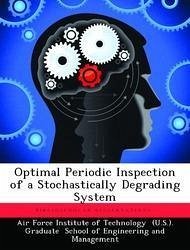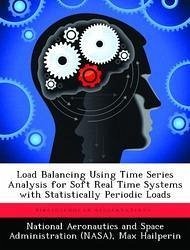Nicht lieferbar

Optimal Periodic Inspection of a Stochastically Degrading System
Versandkostenfrei!
Nicht lieferbar
This thesis develops and analyzes a procedure to determine the optimal inspection interval that maximizes the limiting average availability of a stochastically degrading component operating in a randomly evolving environment. The component is inspected periodically, and if the total observed cumulative degradation exceeds a fixed threshold value, the component is instantly replaced with a new, statistically identical component. Degradation is due to a combination of continuous wear caused by the component's random operating environment, as well as damage due to randomly occurring shocks of ran...
This thesis develops and analyzes a procedure to determine the optimal inspection interval that maximizes the limiting average availability of a stochastically degrading component operating in a randomly evolving environment. The component is inspected periodically, and if the total observed cumulative degradation exceeds a fixed threshold value, the component is instantly replaced with a new, statistically identical component. Degradation is due to a combination of continuous wear caused by the component's random operating environment, as well as damage due to randomly occurring shocks of random magnitude. In order to compute an optimal inspection interval and corresponding limiting average availability, a nonlinear program is formulated and solved using a direct search algorithm in conjunction with numerical Laplace transform inversion. Techniques are developed to significantly decrease the time required to compute the approximate optimal solutions. The mathematical programming formulation and solution techniques are illustrated through a series of increasingly complex example problems. This work has been selected by scholars as being culturally important, and is part of the knowledge base of civilization as we know it. This work was reproduced from the original artifact, and remains as true to the original work as possible. Therefore, you will see the original copyright references, library stamps (as most of these works have been housed in our most important libraries around the world), and other notations in the work. This work is in the public domain in the United States of America, and possibly other nations. Within the United States, you may freely copy and distribute this work, as no entity (individual or corporate) has a copyright on the body of the work. As a reproduction of a historical artifact, this work may contain missing or blurred pages, poor pictures, errant marks, etc. Scholars believe, and we concur, that this work is important enough to be preserved, reproduced, and made generally available to the public. We appreciate your support of the preservation process, and thank you for being an important part of keeping this knowledge alive and relevant.






